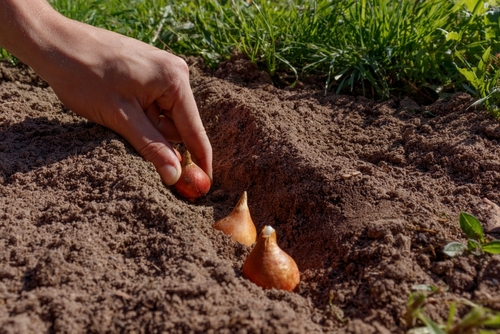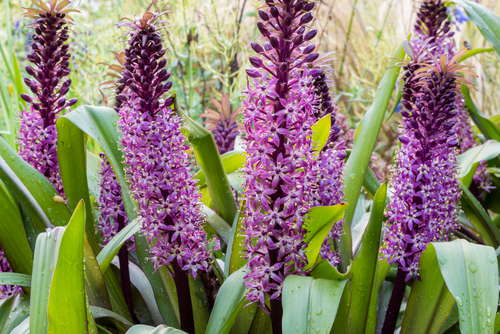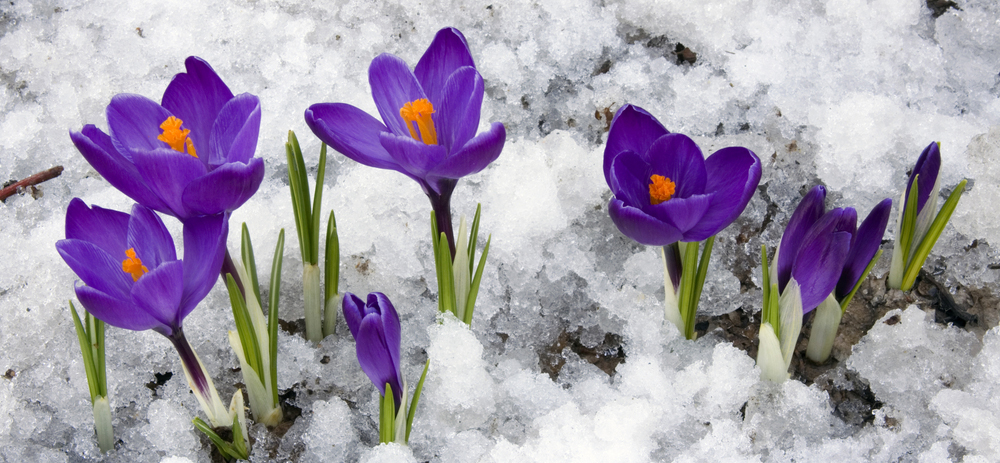Spring is approaching quickly. Soon, we’ll be ready to start enjoying our gardens again. Spring is usually the most popular time for planting summer flowering bulbs. However, there are many bulbs that you can plant during the winter, ready for a fabulous spring display. So, which bulbs are best for planting in winter?
Not all bulbs are capable of surviving harsh winter conditions. You can’t simply plant any bulb and expect it to produce a flower in the spring. Most bulbs are not hardy enough to survive colder conditions, and you may be disappointed at putting in all of that hard work and coming back to no blooms in the spring.
Gardening expert Fiona Jenkins at MyJobQuote.co.uk has created this guide so you know exactly what you can plant in your garden now. So, if you’re looking to get a head start on your gardening this year, take a look at the list below, pop on your gardening gloves, dust off your gardening tools, and get to work.
Which Bulbs Can You Plant in Winter?

If you’re looking to plant some bulbs now and get a head start on your gardening, it’s important to know what you can and can’t plant in winter. Some bulbs simply won’t be able to stand the harsh weather conditions that winter brings, and they won’t be able to bloom.
Knowing which bulbs you can plant now will help to ensure that your garden is thriving in spring.
Below is a list of the best bulbs to plant now:
Lilies
Lily bulbs tend to be quite hardy and can be planted at any time from autumn to spring. These bulbs need to be planted in rich, well-drained soil and should be located in a sunny spot in the garden. Plant the bulbs roughly 15 – 20cm deep to ensure the best growth.
If the soil in your garden is heavy or doesn’t drain well, you could plant lily bulbs in a pot or container and create a lovely potted display that you can place on your patio. Potted bulbs can later be planted in borders once they’re established.
Liatris
Liatris are a tough type of herbaceous perennial originating from North America. These plants are great for attracting wildlife, such as butterflies and bees, into your garden. The bulbs produce large blooms, which eventually form a clump and can then later be divided in spring.
These bulbs must be planted in well-drained soil and should be located in an area with plenty of light. Plant these bulbs roughly 5cm deep for the best results.
Eucomis

Eucomis bulbs are most commonly planted in spring. However, the end of January and into February is not too early to get these plants started in pots and containers. If they are planted in well-drained soil, these plants tend to be quite hardy and can withstand cold temperatures up to around minus six degrees Celsius.
These bulbs should be planted in pots roughly 15cm deep to produce a gorgeous summer display. Alternatively, they can be planted out on a border once they’re actively growing. However, you should only do this after the last frost.
Tulips
Tulips are usually planted during autumn. However, they can still produce a decent display when planted in winter. Planting tulip bulbs when the temperatures have dropped reduces the risk of tulip fire, which is a fungal disease that thrives in warm, damp conditions.
Tulips should be planted in well-drained soil in a sunny area of the garden. These bulbs will produce a gorgeous, vibrant display roughly around April or May time.
Daffodils

Daffodils are best planted in autumn. However, they can still be planted in January and February and produce gorgeous blooms in spring. Loosen the soil where possible and scatter some fertiliser before placing the bulbs on top of the soil. Avoid pushing them in the soil, as this could damage the bulb.
Once the bulbs are in place, cover with roughly 2-4 inches of mulch or finished compost. Renew the mulch covering regularly with a fresh 2-inch layer. This will give your daffodils the best chance of blooming when planting in winter.
How Do You Plant Bulbs Properly For Good Establishment and Growth?

If you’re new to planting bulbs in the garden, you may be wondering what the best method is. Generally, bulbs should be planted roughly three times the depth of the bulb itself. If you’re unsure, it’s better to dig and plant them a little deeper rather than not.
You’ll need to dig a hole that is wide enough for the bulb size. Place the bulb into the hole with the shoot facing upwards. You must space the bulbs at least twice their width apart. Once planted, fill the hole with soil and gently firm them into place. Avoid stepping on the soil once the bulbs have been planted, as this could cause some damage. After the planting is complete, water your bulbs once and then start watering them regularly once you start seeing active growth.
As long as you follow these tips, you will be rewarded with a gorgeous display of spring plants. This will allow you to start enjoying a gorgeous, vibrant display earlier in the year. As soon as spring comes around, your garden will be the envy of all of your neighbours.
Final Thoughts
As you can see, several plants can be planted in winter. As long as you are careful with the bulbs, have plenty of drainage and sunlight, and take care of the bulbs properly, you will be rewarded with some gorgeous blooms in spring. From there, you can start planting your spring bulbs so that your garden continues to flourish into summer and beyond.





